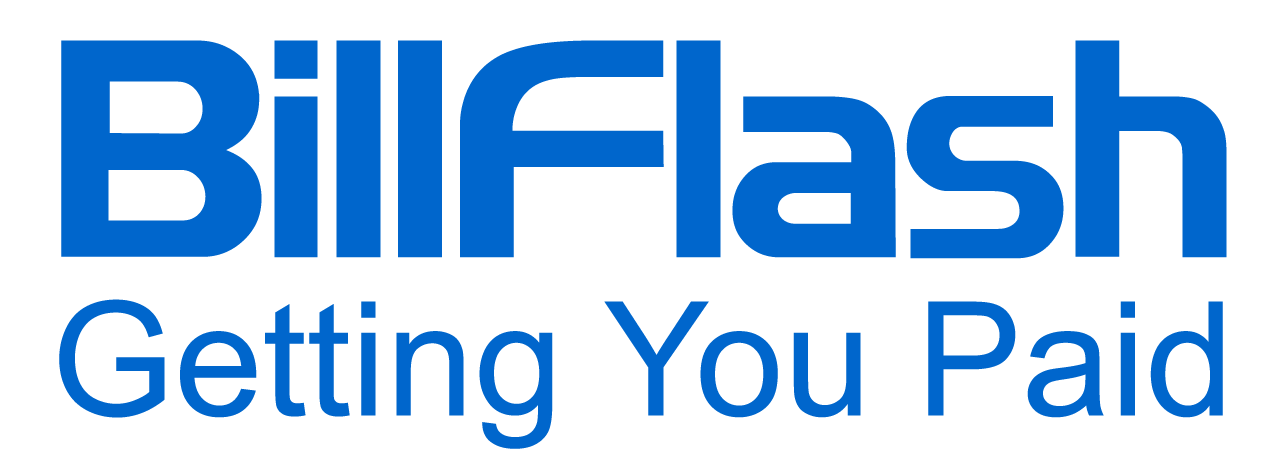Learn how the right tools and strategies can help your practice navigate the year-end patient surge without overwhelming your staff.
As summer begins to fade and September arrives, practices start to notice the early signs of the year-end patient surge. With insurance deductibles set to reset in January, patients schedule appointments, procedures, and treatments in the final quarter to maximize their coverage. While this increase in volume can boost your practice's revenue, it also presents operational challenges. These challenges are especially apparent for frontline staff who manage packed schedules, disorganized workflows, complex billing procedures, and greater patient responsibility.
Now is the time to plan. Rising patient responsibility means more out-of-pocket costs, and about half of U.S. adults say they would be unable to pay an unexpected medical bill of $500 out of pocket, with one in five stating they would not be able to pay it at all. The reality is that nearly one in four adults (23 percent) report that they or a family member in their household experienced problems paying for healthcare in the past year. The challenges are even greater for communities of color. 33 percent of Hispanic adults and 30 percent of Black adults report trouble paying for care. The situation is more severe among uninsured adults under age 65, with 55 percent facing problems paying for healthcare, compared to 22 percent of insured adults.
If practices wait until the rush hits, they face stress and burnout, disrupted workflows, and missed opportunities to generate revenue. But your practice doesn't have to choose between accommodating the patient surge and protecting your staff from burnout. With the right billing strategies and modern automation tools, your practice can navigate this challenging period while maintaining quality care and keeping staff energized through the new year.
Why the Year-End Patient Surge Strains Practices
The ins and outs behind the year-end patient surge are straightforward, but their impact on practice operations can be complex. When January 1st arrives, patients' insurance deductibles reset to zero, meaning they'll start paying out-of-pocket again for covered services. For someone who has already met their deductible by November, scheduling procedures in December makes perfect financial sense.
This dynamic can have significant implications. 36% of adults have skipped or postponed getting needed healthcare in the past 12 months due to cost, creating demand surges in Q4. This translates to appointment schedules that fill weeks in advance, longer daily schedules, and front desk staff answering countless calls while trying to manage increased patient billing responsibilities.
There's also another layer to consider, as end-of-year appointments come with higher patient responsibility amounts. A patient accustomed to $50 copays for most of the year may be shocked by a $500 bill for procedures covered at 100% only after meeting the deductible. This shift often means more detailed financial counseling, longer check-in processes, and greater collection efforts when patients aren't prepared for these costs.
It's no wonder that staff burnout becomes a real risk. This increases when staff strive to maintain the personalized patient care that defines your practice, even during the busiest periods.

Reduce Delays With Pre-Visit Billing
A highly effective way to manage year-end patient surge is to address payment discussions before patients arrive at your practice. 92% of patients prefer knowing their financial responsibility before their visit, but many practices struggle to provide this information consistently in advance. Pre-visit billing changes the patient experience by shifting cost conversations from the busy check-in desk to a more private, less pressured communication channel.
When patients can view their financial responsibility via a secure, HIPAA-compliant link sent via text or email before their appointment, they have the opportunity to pay in advance. This helps them arrive with peace of mind and ensures a smoother check-in experience. BillFlash PreBill makes this a reality by sending patients a secure PreBill link via text or email. This allows them to view their charges and pay online at PayWoot.com before they arrive. PreBill also works for office and telehealth visits, and it collects payments even before your practice creates a formal bill.
This makes PreBill perfect for collecting amounts during the busy year-end period. The benefits also extend beyond smoother patient check-ins. PreBill helps prevent surprise patient balance conversations and avoids appointment delays. It can also speed up your collection cycle and eliminate the need to pursue payments after the visit. Most importantly, when managing the patient surge, it frees front desk staff from lengthy financial discussions during peak appointment times. This allows them to focus on better coordination and patient flow.
Streamline Payment Reminders With Automation
According to Becker's Hospital Review, manually chasing claim status checks takes healthcare staff an average of 19 minutes per inquiry and costs providers $9.37 each time. The same challenges exist when staff make manual payment reminder calls to patients. These calls are one of the biggest hidden time drains during the patient surge, pulling staff away from higher-value activities.
However, with 17% of Americans currently carrying healthcare debt from bills they put on credit cards and are paying off over time, the need for timely and efficient payment communications is greater than ever. The traditional approach of having your staff call patients with outstanding balances becomes unsustainable when appointment volume increases. Staff may stay late to complete reminder calls or let balances age while handling immediate appointment demands.
These inefficiencies harm your bottom line while creating burnout, frustration, and missed opportunities to engage with patients about their care. As payment demands increase and patients face tighter budgets, your practice needs a solution that reduces administrative work and helps collect payments on time. Fortunately, automated reminders eliminate this bottleneck while achieving better results than manual outreach.
How Automation Benefits Your Practice
BillFlash PayReminders, for example, provides text and email messages that work instantly upon activation. The solution automatically sends up to three reminders per month via text and/or email at 7, 14, and 21-day intervals after the first bill. It also removes patients from the sequence once they make a payment. PayReminders operates on a ‘set it and forget it' model, making it perfect during the year-end patient surge.
You only pay for reminders actually sent, and the system handles everything automatically. If your practice wants more control, you can customize the timing and content of the reminders to fit your workflows. This approach enables quick follow-up on outstanding balances, giving your staff relief during the most demanding time of the year.
With BillFlash providing specific reports, this level of automation enables your practice to optimize messaging frequency based on payment response rates rather than relying on guesswork. This approach makes your reminder strategy more effective over time. It also results in faster payments and improved cash flow throughout the year.

Offer Flexible Payment Options to Prevent Cancellations
Large patient responsibility amounts create a significant challenge during the year-end patient surge. Patients are motivated to complete their treatments before their deductibles reset. However, many cannot afford high out-of-pocket expenses, especially during the holiday season when many household budgets are already tight.
Many of your patients face significant financial challenges when making healthcare decisions. 44% of adults report that they struggle to afford their healthcare costs. This creates situations where your practice loses revenue opportunities while your patients miss optimal treatment timing. As your patients weigh the cost of care against other expenses, your practice can look for ways to support them financially without sacrificing your own cash flow or adding administrative burdens. One effective option is patient financing solutions.
Flexible patient financing options provide a smart solution that benefits everyone involved. With options like BillFlash FlexPay, providers can receive payment in full immediately while offering patients affordable monthly installments. FlexPay features an online application that takes under one minute to complete and requires no hard credit check. This protects patients' credit scores while providing financing options. With a 90% approval rate and a guaranteed interest-free option for every approved patient, FlexPay makes treatments possible for nearly all patients, regardless of their current financial situation.
From a practice perspective, FlexPay eliminates cash flow concerns by ensuring providers receive payment as soon as the next business day, with no risk if a patient misses a payment. It also integrates right into your existing billing workflow. Patients can select FlexPay at checkout, apply instantly online, and choose the payment plan that suits their needs. This process removes uncomfortable collection conversations and reduces administrative overhead. It also helps your practice attract new patients and retain those who might otherwise delay care.
Integrate Billing and Collections for Efficiency
Managing multiple software systems for billing, payments, and collections can create significant challenges, especially during the year-end patient surge. Many practices struggle with disconnected systems that cause data inconsistencies, duplicate staff actions, and communication gaps. When patient volume increases significantly, these inefficiencies multiply.
Staff find themselves using multiple systems to check payment status, update records, and coordinate collections. Without automatic data syncing, patients may receive reminder calls for balances they've already paid, or accounts might move to collections before reminders are even complete. BillFlash Integrated Collections addresses these issues with a platform developed based on provider feedback. 65% of surveyed providers stated they need help with collections.
The system integrates with BillFlash Billing and Pay services, enabling you to manage billing and payment workflows in one place. The collections process emphasizes provider control and transparency. You manage the rules that generate recommended accounts for collections during normal billing reviews, approve which accounts to send (and withdraw any at any time), and maintain full visibility into all contact activities. Licensed Recovery Specialists in all 50 states handle patient interactions respectfully, and 75% are bilingual to overcome language barriers.
With Integrated Collections, your staff can focus on patient care instead of overdue balances. The solution manages collection activities and offers payment plans for patients unable to pay in full. Most importantly, collected payments are deposited directly into your existing BillFlash Pay Services bank account. This means you receive payment first, with no waiting for a collections agency to take its cut. By streamlining collections, one practice achieved an increase of $10,000 to $15,000 in just the first few months. This exhibits a measurable difference with BillFlash Integrated Collections.

Finish Strong Without Staff Burnout With BillFlash
The year-end patient surge represents opportunities and challenges for your practice. While the increased volume can impact your revenue goals, the traditional approach of your staff putting in extra effort and longer hours creates stress for them and often compromises the patient experience that your practice worked to perfect.
Modern billing automation and integrated payment solutions provide a more effective direction. When you implement pre-visit billing, automated payment reminders, flexible financing options, and integrated collections solutions, your practice can accommodate the patient surge while reducing the burden on your staff.
The key is having technology manage the repetitive tasks that consume staff time during busy periods. This frees them to focus on activities that directly impact patient care and satisfaction. When patients arrive prepared for their financial responsibility, receive consistent payment reminders without staff intervention, have access to flexible payment options, and experience better billing processes, everyone benefits.
Ready to handle the year-end surge without overwhelming your team? Schedule a demo with BillFlash today to learn how our billing, payment, and collection software streamlines workflows, speeds up payments, and builds patient trust.

